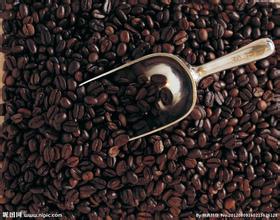Introduction to the characteristics of flavor description of coffee manor in Arusha, Tanzania with refreshing acidity
Tanzania covers an area of 945087 square kilometers, of which Zanzibar is 2657 square kilometers. It consists of the mainland, Zanzibar and more than 20 small islands. Located in eastern Africa and south of the equator, the continent is bounded by the Indian Ocean to the east, Zambia, Malawi and Mozambique to the south, Rwanda, Burundi and the Democratic Republic of the Congo to the west, and Kenya and Uganda to the north. The coastline of the mainland is 840 kilometers long. The topography of Tanzania is high in the northwest and low in the southeast, showing a ladder shape. The eastern coast is a lowland, the western inland plateau accounts for more than half of the total inland area, and the East African Rift Valley runs from east to west from Lake Malawi to the north and south. The Kibo peak of Mount Kilimanjaro in the northeast is 5895 meters above sea level, which is the highest peak in Africa. The types of rainfall can be divided into bimodal distribution and unimodal distribution. The areas with double bee rainfall include the provinces around the Lake Victoria basin, the northeast highlands, the coastal and inland northeastern. The bimodal rainfall area is characterized by two rainy seasons. The short rainy season occurs from September to December. The total rainfall can reach 200-500 mm. The long rainy season occurs from March to May, and the rainfall reaches 300-600 mm. The areas outside the double bee distribution rainfall area belong to the single bee distribution rainfall area. The rainfall time is from November to April, and the rainfall is up to 500-1000 mm.
Tanzania is close to Kenya, so the shape of Kilimanjaro coffee is similar to Kenyan coffee. But it is not as clear and divergent acidity as Kenya AA, but gives people a softer, more refreshing feeling, while with the aroma of wine and fruit, people taste endless aftertaste, it can be said that the pure Kilimanjaro coffee is "the most African coffee." Mount Kilimanjaro is 5895 meters above sea level and connected to Mount Meru. It is the highest peak on the African continent. It is also the only snowy peak on the earth located on the equatorial line, known as the "roof of Africa". The rich volcanic ash on the mountain gives the coffee here a strong texture and soft acidity, making it have the characteristics of typical African coffee beans. Kilimanjaro AA is the highest grade coffee beans, medium or above roasted with a strong aroma, suitable for individual coffee varieties grown in Tanzania are Arabica and Robusta. Many people know that the coffee that grew up in the Kilimanjaro volcano zone has long been known as the "coffee swordsman" along with the "king of coffee" Blue Mountain and the "coffee lady" mocha.
The coffee beans produced here are all exported from Kilimanjaro, but apart from Mount Kilimanjaro, there are several major coffee-producing areas throughout Tanzania, there are more small farms in other areas, and most small farms also have a planting area of several hundred mu. Some have their own washing equipment and drying farms, but graded treatment still has to go through large-scale treatment plants. Tanzania has considerable historical experience in growing coffee. Even small farms can handle coffee beans of good quality. Drinking Tanzanian coffee, especially round bean peaberry, is always impressive. Coffee is like the simple, frank and enthusiastic national character of Tanzania. Its refreshing acidity and medium mellowness complement sweet citrus and floral aromas. This coffee tastes great whether it's a hot drink or iced coffee. With oranges or berries, it can show its bright flavor. You can see that different ethnic groups produce different coffee flavors, while the same land breeds coffee trees and people at the same time.

Important Notice :
前街咖啡 FrontStreet Coffee has moved to new addredd:
FrontStreet Coffee Address: 315,Donghua East Road,GuangZhou
Tel:020 38364473
- Prev

Introduction to the sweet and fragrant coffee flavor description methods and methods of Bolivian snow vein manor
In the late 1950s, the leaders of the Bolivian nationalist revolutionary movement began to turn right. They proposed the establishment of a bourgeois democratic society, advocated an alliance with the United States, excluded leftists, abolished workers' supervision, froze workers' wages, and promoted labor, that is, communism. After the pressure from the United States, it compensated the foreign companies. Thus arousing the dissatisfaction of the people. In November 1964, R. Barrientos
- Next

Introduction to the characteristics and treatment methods of coffee flavor description of Indonesia Fuyin Manor with strong texture
Indonesia is also the producer of the world's most expensive coffee, known as Kopi Luwak. The historical origin of Kopi Luwak is as interesting as its taste. The authentic Kopi Luwak collects the droppings of wild raccoons (common raccoons, coconut raccoons), which are nocturnal in coffee plantations, foraging for well-ripe coffee beans. But it can't digest rocks, cafes and cherries, so these cherries
Related
- Does Rose Summer choose Blue, Green or Red? Detailed explanation of Rose Summer Coffee plots and Classification in Panamanian Jade Manor
- What is the difference between the origin, producing area, processing plant, cooperative and manor of coffee beans?
- How fine does the espresso powder fit? how to grind the espresso?
- Sca coffee roasting degree color card coffee roasting degree 8 roasting color values what do you mean?
- The practice of lattes: how to make lattes at home
- Introduction to Indonesian Fine Coffee beans-- Java Coffee producing area of Indonesian Arabica Coffee
- How much will the flavor of light and medium roasted rose summer be expressed? What baking level is rose summer suitable for?
- Introduction to the characteristics of washing, sun-drying or wet-planing coffee commonly used in Mantenin, Indonesia
- Price characteristics of Arabica Coffee Bean Starbucks introduction to Manning Coffee Bean Taste producing area Variety Manor
- What is the authentic Yega flavor? What are the flavor characteristics of the really excellent Yejasuffi coffee beans?

